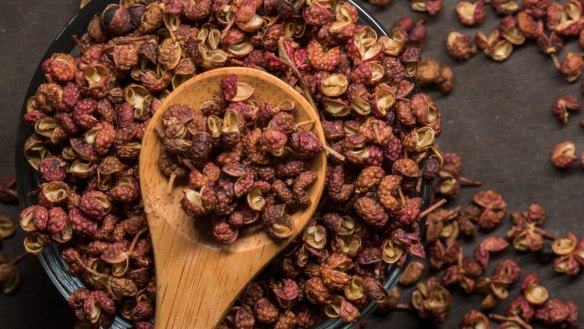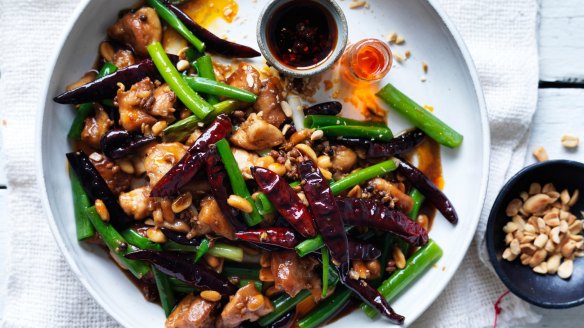Sichuan pepper: Everything you need to know

What is it?
Sichuan pepper is an aromatic, tangy, and mouth-numbing spice from China's Sichuan province, and despite the name is not a type of pepper but the tiny dried fruit of a species of prickly ash tree native to the region. Once dried, the pinkish fruit can have the seeds removed, as preferred by chefs, sold whole or ground to a powder. Less readily available, green Sichuan pepper has a more robust and earthy flavour. It sits alongside chillies as a foundation flavour for the cuisine of this south-western Chinese province. The spice is also used in the cuisines of Nepal and Tibet and other parts of North Asia where the trees grow.
Why do we love it?
Sichuan pepper is a beautifully complex, vibrant spice that brings delicate citrus notes, an acidic tang and the ability to numb the mouth a little while making it feel as if it's charged with an ethereal current. A molecule called hydroxy-alpha-sanshool, naturally present in the peppers, interacts with the cell receptors on the inside of our cheeks and tongue, making them feel as if something is touching them. At the same time, it deadens their ability to feel the scorch of another molecule called capsaicin, found in chilli peppers. This is where the Sichuan aesthetic of ma la (balance) comes into play. Dishes such as kung pao chicken and mapo tofu combine numbing and chilli heat. The numbing sensation allows you to explore the flavour and aroma of chilli without being overwhelmed by its sting.

Who uses it?
Victor Liong is chef and co-owner of Lee Ho Fook in Melbourne and Chuuka in Sydney. Although his family is from the south of China in Guangzhou, his mum used Sichuan peppers by mixing them with white pepper and salt to sprinkle over fried calamari. "But I began to understand Sichuan pepper when I was an apprentice at the Observatory Hotel in Sydney, and we were hosting Iron Chef Chen Kenichi," says Liong. "He showed us how to cook not only with the peppercorns but to finish a dish with peppercorn oil to get the ma la right. It is part of Chinese five spice; you use it with ginger, spring onion, star anise and cinnamon for a master stock or you can toast it and grind it into a powder and sprinkle a little on freshly grilled meat dishes." One of Liong's signature dishes at Lee Ho Fook is deep-fried battered eggplant slathered in a sauce of chilli, chilli bean paste, Sichuan peppercorns and black vinegar.
How do you use it?
Grind a few peppercorns and stir a quarter of teaspoon through a bloody Mary, or sprinkle Kylie Kwong's Sichuan salt over grilled lamb skewers. Kwong toasts the peppers by putting them in a heavy-based pan with salt over a medium heat, stirring until they become aromatic and pop open. Stir-fry squid and vegetables and serve them with noodles or try the classics of mapo tofu and kung pao chicken. If you really want to get hot and tingly with Sichuan pepper, invest in a copy of one of Fuchsia Dunlop's cookbooks on Sichuanese food.
Where do you get it?
Asian grocers and good food stores. Buy online at essentialingredient.com.au, herbies.com.au and peppercorns.com.au. Store the peppercorns in a tightly sealed jar away from light and use within three months of opening.
Richard Cornish has turned his focus to ingredients. Suggest an ingredient via email to brainfood@richardcornish.com.au or tweet to @foodcornish.
Appears in these collections
- More:
- Food
- Brain food
